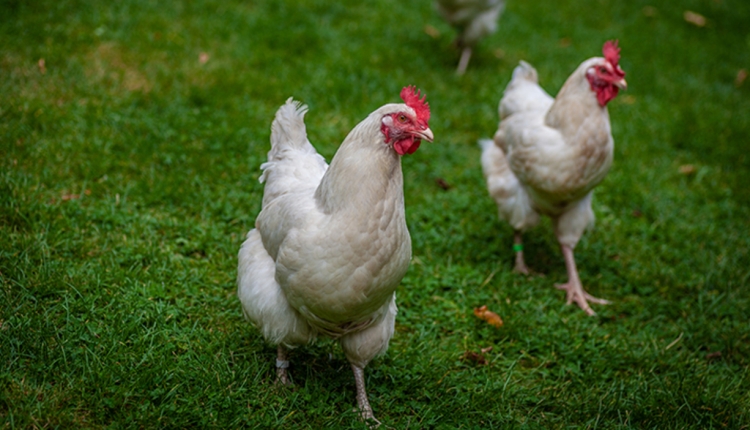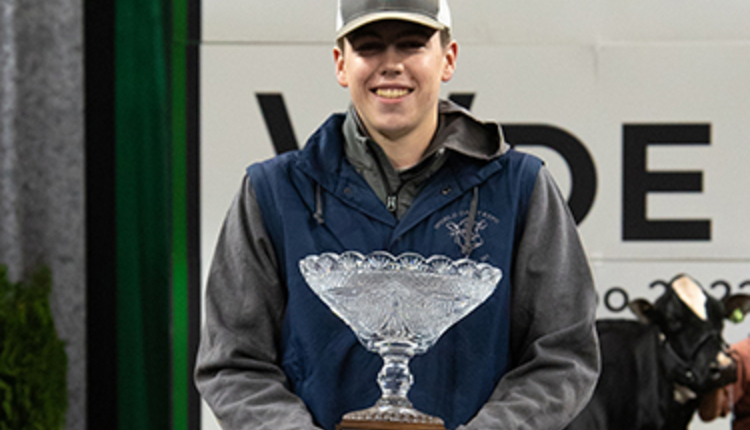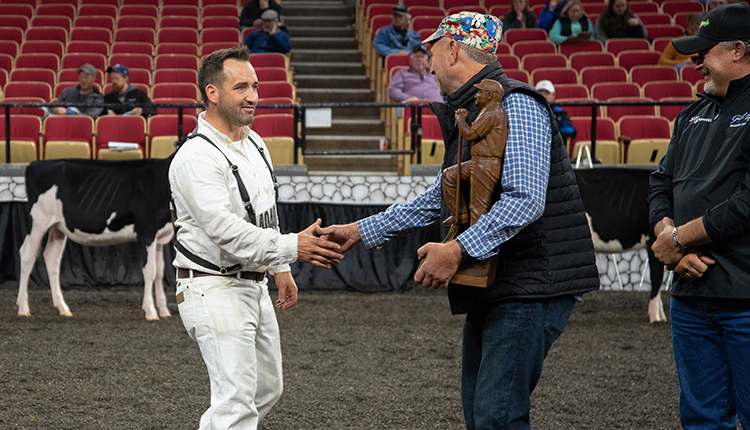
How did the grassroots volunteer network develop and grow the show?
The volunteer support has been unbelievable. Volunteers have been critical to run and grow the show. A wealth of people stepped forward to be volunteers, and others were cultivated to participate over time. We all realized you couldn't afford to pay all those people to run the show.
University and extension personnel were certainly on the forefront along with registered breeders from Wisconsin and some neighboring states. Other folks just helped because they liked the idea. They may not have had anything to do with the dairy industry originally.
The Friends of Expo party we have each year to recognize all those people and promote the show encourages further participation and let's them know how much we appreciate them.
Breeding good cattle has always been top of mind with you. With that in mind, how did your development of ABS's Genetic Mating Service (GMS) lead to breeding better dairy cows?
Doug Dodds was one of the people who was intrigued with my development of the Genetic Mating Service concept, although it didn't have that name at the time. I spent a lot of time in the New York area fine-tuning some of these ideas with Dodds. Then I brought him in to be the first manager of the GMS program.
I really had developed this concept for my own purposes without the help of a computer system. I just did it in my mind, evaluating these different sire groups and making a decision on how each cow should be mated to produce these young bulls. It gradually got bigger and the database became massive, making my personal tracking difficult. As I added people to the sire mating staff, I began putting the electronic database together.
We had a remarkable programmer in our computer department. He didn't know anything about a cow, but our team was able to describe to him how the program was to work. The program made over 2,000 decisions for each mating for each cow from production, type and pedigree information.
How did you incorporate linear scoring into the GMS mating program?
It took some time to perfect it. Harold Schmidt and Doug Wilson, both employees of ABS at the time, were instrumental in the process. We spent a lot of time talking about a better way to put numbers to what we were trying to evaluate. As we perfected the system, we applied linear that had 50 points for each trait. As we accumulated our data set, we were able to further fine-tune the appraisal system.
How did your work with genetic evaluations come full circle with Interbull, the international genetic comparison?
In the late 1990s, the USDA was concerned that the data from other countries going into Interbull genetic evaluations was not uniformly handled. I was tapped by NAAB (National Association of Animal Breeders) to go to Interbull in Sweden with a USDA specialist.
When I arrived in Sweden, I actually was on the same campus where I'd gone to school decades earlier. The geneticist who was in charge of what became Interbull - Jon Phillipson had the same professor (Johansson) as I did in the 1950s. (Phillipson later received the World Dairy Expo International Award.)
I gave a full report to the USDA and improvements were made to the system. My impression was that the industry is now comfortable with Interbull results. Genomics may supercede it to some degree now.
You served as co-chair for the fundraising committee to establish and build National Dairy Shrine's museum in Fort Atkinson. You also were a founding member of the Holstein Foundation's board of trustees. Why have you given back to the greater industry?
First, people asked me to do those things. It was just natural to say yes. I remember going to the Dairy Shrine building at Waterloo, Iowa, as a college student. Dairy Shrine had been formed one or two years before my first visit, and our coach took us to that small white house where you could have a meal and learn about dairy history. I became very committed to Dairy Shrine.
As the National Dairy Cattle Congress began to fail, Dairy Shrine materials also got packed up for a number of years. Finding a new home for the museum in Fort Atkinson was a must.
The same goes for the Holstein Foundation. It just seemed like the right thing to do, and I enjoyed it.
One final question. The long-standing ABS Coffee, Milk and Donut Run has been a staple each morning for World Dairy Expo dairy cattle exhibitors. Tell me how the idea came about?
That goes back to my days at Waterloo when I was an assistant on the show string with the Meadow Lodge Farm. Back in those days, you had your cot and slept in front of the cows. Maybe you had an old coffee pot, but there wasn't any place to go get a bite to eat. You worked half the morning before you ever ate. It was tough!
When we started World Dairy Expo, I thought about those days. How nice it would be if you could have a cup of coffee, a glass of milk and a donut in the morning when you're getting up and starting chores.
That's why I started the ABS Coffee Run. Exhibitors really seem to have appreciated it over the years. Those delivering coffee, milk and donuts were mostly secretaries. They all had to show up in uniform at 5 a.m. and learn more about the dairy industry. They were all willing volunteers. It was a great experience for them.









